Bird Walk Trail

You are invited to take flight and discover 12 bird sculptures on West Beach Road and Apex Park connected with a trail of colourful bird art stobie poles.
The Bird Walk Trail sculpture and stobie pole project was created by the City of Charles Sturt and the City of West Torrens in collaboration with artist Jorji Gardener and West Beach Primary School students and teachers Jaimee Inglis, Kath Moore and Will Bahnisch.
We would also like to thank Uncle Mickey - Michael Kumatpi Marrutya O'Brien - for generously originating and giving permission to use the Kaurna names of the birds, where available.
Birds and the Reedbeds
This project showcases the birds found in this area and also highlights bird species lost from this area and those that are in decline. 230 bird species were once documented in the Reedbeds, however 70 have been lost and a further 20 have been in decline over the past 30 years.
The Greater Reedbeds from Glenelg, towards the Airport, and Fulham, and North to Grange, were once a huge wetland of reeds and rushes with woodlands of Redgum, Eucalyptus camaldulensis. Fed by the waters of the River Torrens, Karrawirraparri, and smaller tributaries, they were a unique habitat, rich in biodiversity and birdlife. Farming and urban development saw this area prone to flooding until the construction of the Breakout Creek in 1935. This development diverted the river near the Adelaide Airport and created a new channel to the sea, which drained the Reedbeds.
Without the waterways and wetlands, the area was unable to sustain this important habitat of birds that once inhabited the area. In addition to draining the wetlands ongoing urbanisation, and development has had a significant impact on the landscape. The removal of the old Redgum trees means loss of nesting sites for birds and marsupials. And the loss of the native bush and understory plants, like Banksias, Native Pines, and grasses leaves no place for the smaller bird species.
To learn more about birds and how we can look after them you can visit Green Adelaide and Bird Life Australia.
Bird Walk Trail locations
Featured birds - Apex Park
Azure Kingfisher
Azure Kingfisher (Photographer Kate Savage)
Kaurna Name: Tintinti
Common Name: Azure Kingfisher
The Azure Kingfisher lives in the vegetation beside waterways and other wetlands. It perches on low, overhanging branches and will catch fish, crustaceans and aquatic insects by plunging into the water.
Each pair of kingfishers defend their own breeding territory. Both parents assist in raising the chicks. The nest is at the end of a burrow dug out of soil in a riverbank.
The Azure Kingfisher was once commonly found around the Reedbeds in Adelaide but is now regionally extinct in SA.
Student Sculptors: Adelicia Liu, Katelin Farrow, Allegra Mazel
Banded Stilt
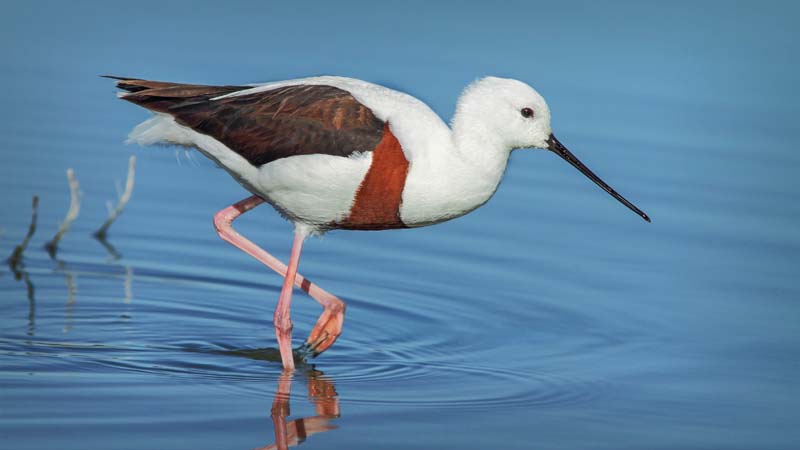
Banded Stilt (Photographer Neil Hickman)
Kuarna Name: Mutu-mutu
Common Name: Banded Stilt
Banded Stilts feed on a variety of crustaceans, insects, seeds and roots and can be seen wading about on their long pink legs probing the waters looking for food.
They breed in the arid inland when wetlands appear after rain. Their nest is a scrape in the ground, saucer-shaped or like an inverted cone.
These wading birds are often seen in large flocks but have not inhabited the Reedbeds area of Adelaide for over 50 years due to habitat loss and the disappearance of the wetlands. They rely on the wetlands where the reeds and wetland plants filter the silt and trap nutrients, creating an enriched soil able to sustain a large variety of biodiversity such as these beautiful birds.
Student Sculptors: Julian Nasteski, Tomas Beitz, Max Cooper
Black Fronted Dotterel
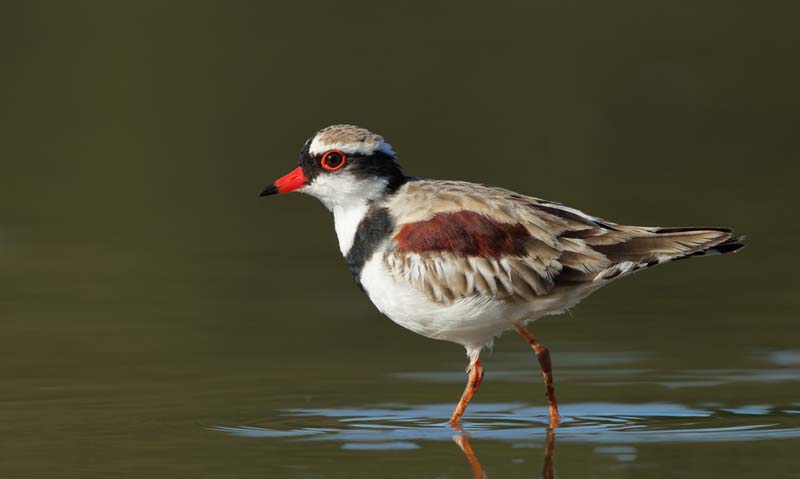
Black Fronted Dotterel (Photographer Ian Wilson)
Common Name: Black Fronted Dotterel
These small wading birds are still found around Adelaide and have managed adapt to man-made wetlands. The like to hang out in the shallow edges of wetlands, and even by storm drains but they are usually always near freshwater. They eat small molluscs as well as aquatic and terrestrial insects.
However, they are threatened by predation by cats which have a huge impact on the native birds and other animals. They are quite comical to watch as they scurry up and down the mudflats bobbing their head and then suddenly stopping to peck at some tasty morsel.
Student Sculptors: Daisy Kluzek, Elsie Stewart , Maddie Murphy
Chestnut Teal
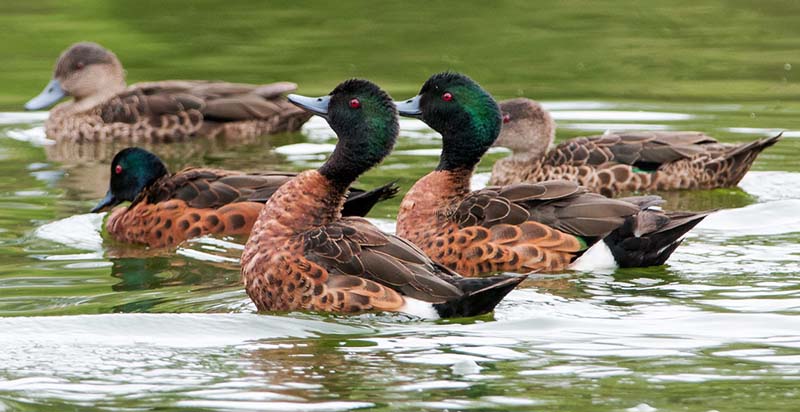
Chestnut Teal (Photographer Les Peters)
Kaurna Name: Kunti-Kuntu
Common Name: Chestnut Teal
A very pretty little duck which inhabits freshwater wetlands although it is one of the few Australian species of duck which tolerates saline waters. It can be found in estuaries and mudflats but usually in freshwater lakes. They like to dabble in the shallow waters for their food and has the typical duck habit of feeding bottom up! These ducks are monogamous and stay together outside of the breeding season.
Student Sculptors: Maggie Mcgregor, Leonie Bailleul Dumineil, Leila Murphy
Superb Fairywren
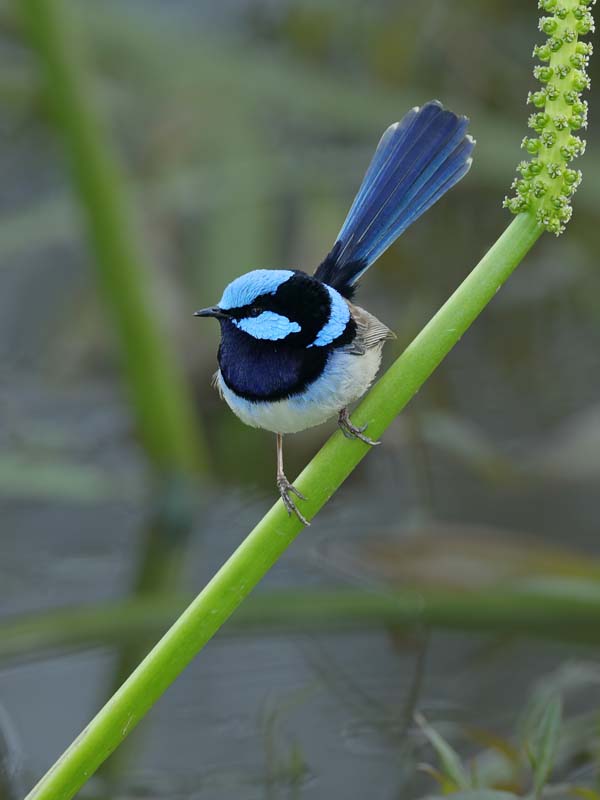
Superb Fairywren (Photographer Ian Wilson)
Kuarna Name: Yuru yurula
Common Name: Superb Fairywren
These spectacular birds are a joy to watch with the bright blue plumage of the males and their entertaining social behaviour. They feed on insects and other small arthropods. The nest is dome-shaped and made of grasses and other fine material. Usually constructed n a low bush by the female. The female incubates the eggs alone, but both male and female feed the young.
Once very common in the Adelaide area they declined from the 1940’s but have in recent years been sporadically seen at Apex Park Wetlands.
They require shrubland and low bushes for habitat and breeding as sedges, reeds, and rushes offer a haven for these small birds. Draining of swamps and marshlands leaves birds such as these without a home, which is why planting native bushes is a great way to provide habitat and encourage them to return.
Student Sculptors: Caras Soliman, Nic Davis, Cristiano Crisa
Swamp Hen
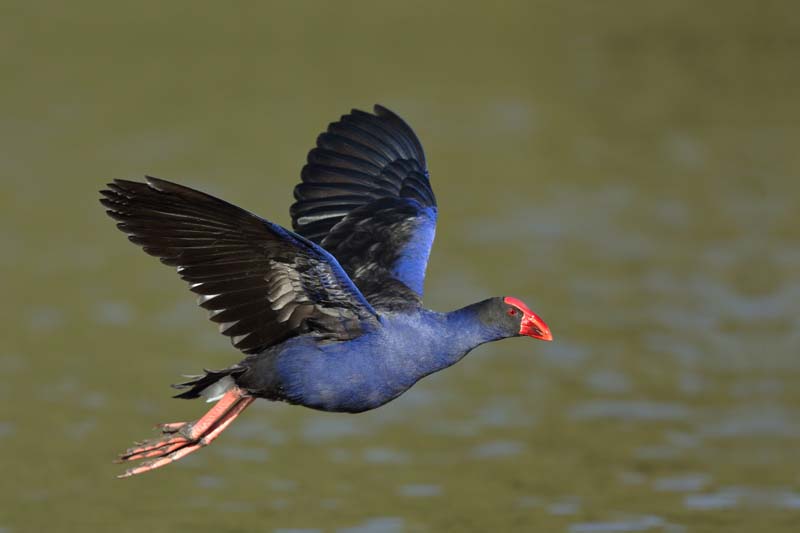
Swamp Hen (Photographer Ian Wilson)
Common Name: Swamp Hen
These bright birds are still common throughout Adelaide where they like to inhabit wetland areas and waterways. They have adapted to urbanisation and seem quite content to wander about the city parks and river areas.
While they can swim well, they prefer to wander among the reeds feeding on the new shoots as well as snails and frogs.
They have a unique tail flick as they walk, and their rich colours make them stand out among the dull plumage of many wetland birds.
Student Sculptors: Charlie Eastward Walkden, Jesse Mengel, Tyler Newmarch-Ward
Featured birds - West Beach Road
Blue Billed Duck
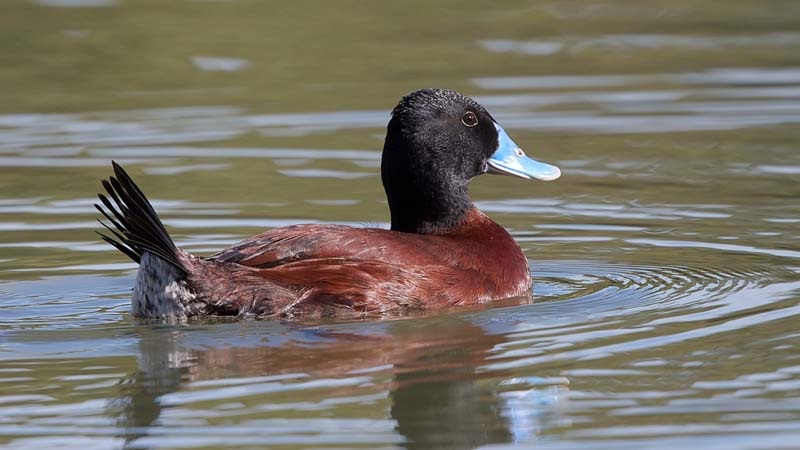
Blue Billed Duck (Photographer Kerry Williams)
Common Name: Blue Billed Duck
This is an almost entirely aquatic duck and rarely seen on land but gathers in large flocks where they forage on a variety of vegetation under the waters.
These ducks would have been attracted to the Reedbeds which was fed by the waters of the River Torrens, Karrawirraparri, and was a unique habitat, rich in biodiversity to sustain large flocks of these and other birds.
It is a compact diving duck with males having a large scooped bright, light blue bill. And females have a brown bill.
This duck feeds on the surface of the water or by diving. It eats aquatic insects and they may also eat the seeds, buds, stems, leaves and fruit of a wide variety of plants. Feeding occurs in permanent areas of clear fresh water. Late afternoon and early morning are common feeding times.
These stunning birds had not been seen in the Adelaide area for a long while, but in recent years they have been sighted at Patawalonga Creek in 2009 and 2017.
Student Sculptors: Lexi Thomson, Robyn Maxworth, Anna Pampali
Brown Goshawk
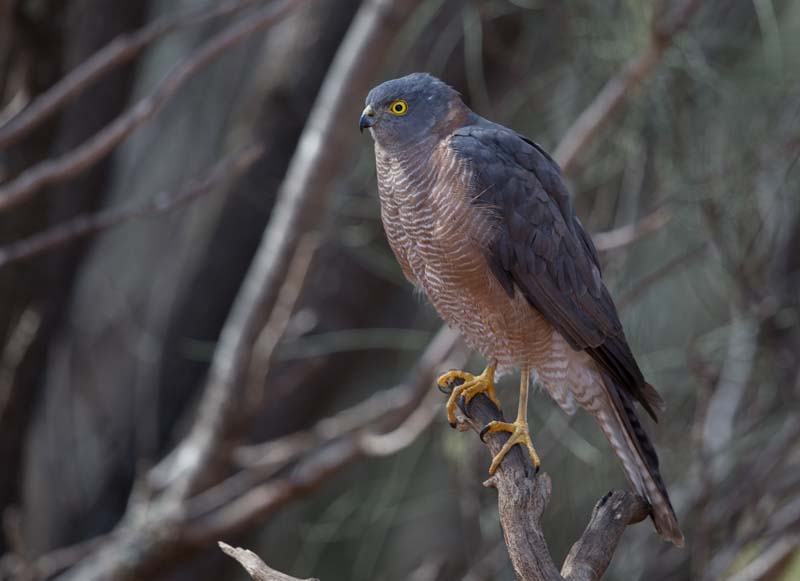
Brown Goshawk (Photographer Michele Sawyer)
Kaurna Name: Mura
Common Name: Brown Goshawk
These are still found in the Adelaide area and are one of the medium sized raptors. Their attractive barred breast and yellow legs make them easy to identify, and they often can be seen perching for a long time on a branch.
These hunters are found in woodland and timbered country and make a large nest out of sticks on a branch of a very tall tree, often near waterways. Their flight is characterised by frantic flapping interspersed with short glides. They mostly hunt birds, but also take small mammals, reptiles and insects.
Student Sculptors: Bayley Blaise Ash, Max Thomson and Will Daniel Cooper
Eastern Rosella
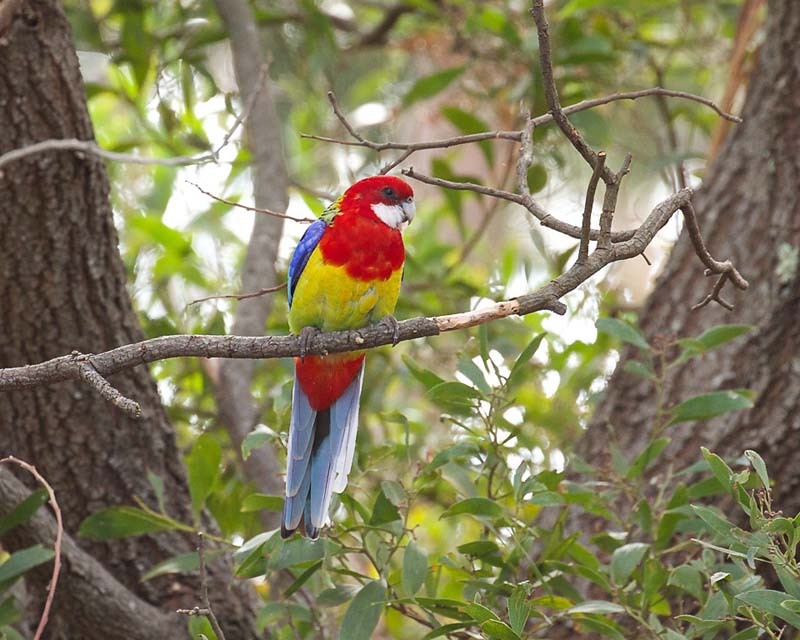
Eastern Rosella (Photographer Sam Savage)
Kaurna Name: Tudlyu
Common Name: Eastern Rosella
An attractive parrot their plumage is vividly coloured — red and yellow and blue and green and black. Despite their bright colours, their plumage is patterned so that it creates an extremely effective camouflage which assists the birds in avoiding detection by potential predators. However as these birds can be found in groups feeding on the ground, often in the grass, it makes them easy prey for cats and other predators.
They mate for life and require large Eucalypt trees for breeding.
Although common in Adelaide they are less numerous in the Reedbeds due to habitat loss. The removal of the old Redgum trees means loss of nesting sites for these birds and other marsupials.
Student Sculptors: Nash Moore, Kai Moore, Bailey Trask, Ava Trask, Willow Trask, Zayda Butterworth, Sayomi Kean, Halle Ramzan , Savannah Ogilvie, Zariah Ogilvie
Golden Whistler
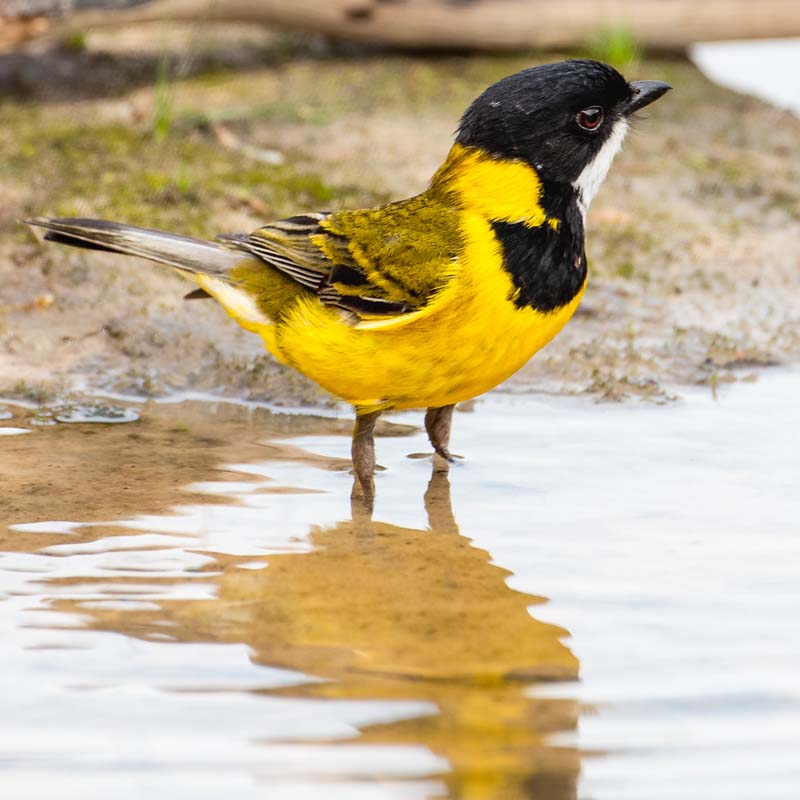
Golden Whilstler (Photographer Kate Savage)
Common Name: Golden Whistler
Golden Whistlers feed on insects, spiders and berries. Their beautiful song can be heard in spring and summer and can travel for hundreds of metres. The males have the distinctive black, white, and yellow plumage, where the female is quite drab in comparison.
They like to nest in the fork of a tree and both males and females share the work of raising their young.
The bird was once common throughout the Adelaide area and Reedbeds. Surveys have shown this species to be in decline for the past 30 years due to urbanisation and habitat loss.
Student Sculptors: Joshua Wiseman, Austin Botha, Crosby Nolan
Hooded Plover
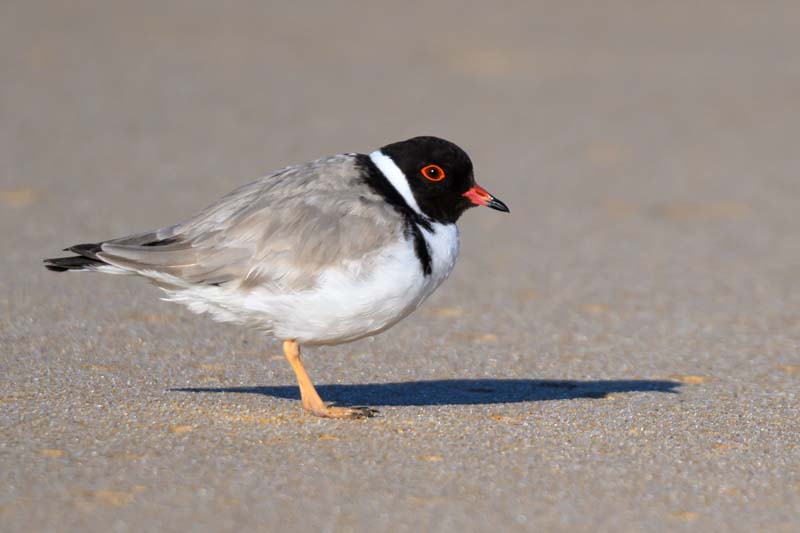
Hooded Plover (Photographer Mark Lethlean)
Common Name: Hooded Plover
These little shorebirds are listed as vulnerable in SA and have become an emblem for bird conservation with groups set up to encourage education and protection of these threatened species. With their attractive plumage they bob up and down the shoreline looking for insects, crabs and molluscs.
They nest in shallow scrapes above the high tide mark which makes them vulnerable to disturbance and predation by cats or dogs. Many community groups are making efforts to protect these areas and they even have a Facebook page! @hooded.plover.birdlife
They are a delightful bird to watch as they dart about in pairs or small family groups.
Student Sculptors: Judd Halliday Josh Mathew Joseph Pani, Alex Olsen
Pelican
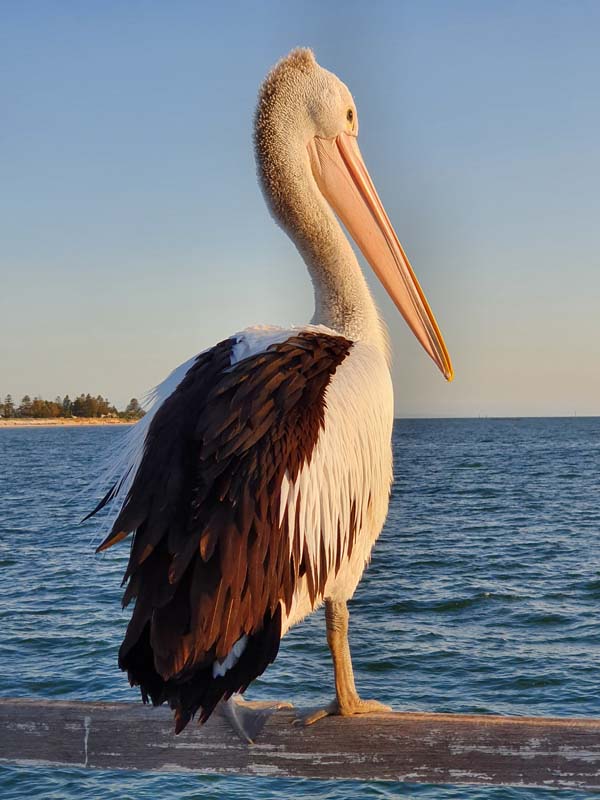
Pelican (Photographer Aimee Richards)
Kuarna Name: Yaltu
Common Name: Pelican
A well-known distinctive and distinguished bird is the Pelican. As they strut about the foreshores and water ways going about their daily business, sometimes alone but more commonly seen in large flocks.
Found in coastal areas and estuarine creeks and rivers they require large bodies of water to provide food.
The pelican's bill is 40 cm - 50 cm long and is larger in males than females. Pelicans have large wings and a wingspan of 2.3 m - 2.5 m.
Student Sculptors: Nash Moore, Kai Moore, Bailey Trask, Ava Trask, Willow Trask, Zayda Butterworth, Sayomi Kean, Halle Ramzan , Savannah Ogilvie, Zariah Ogilvie
Stobie pole art